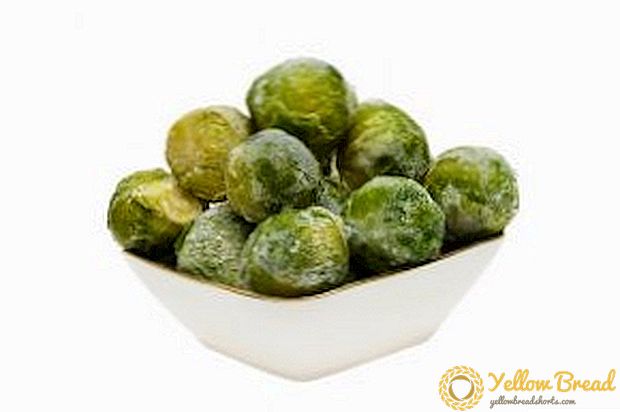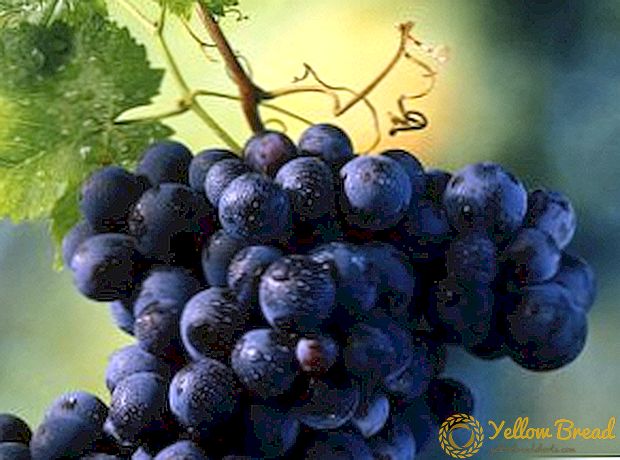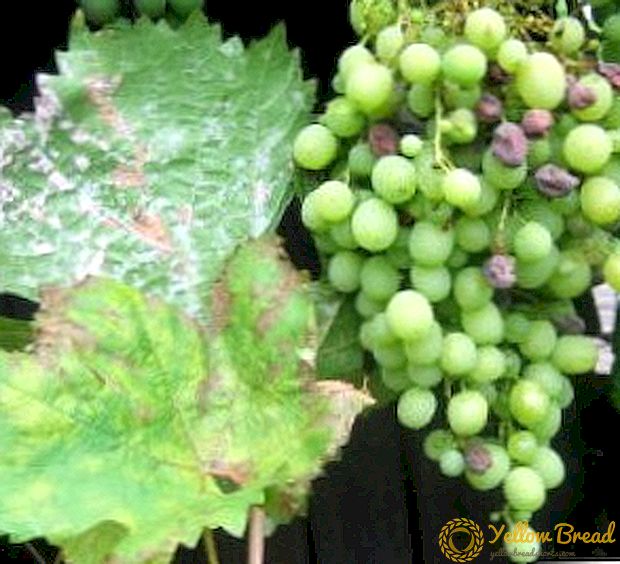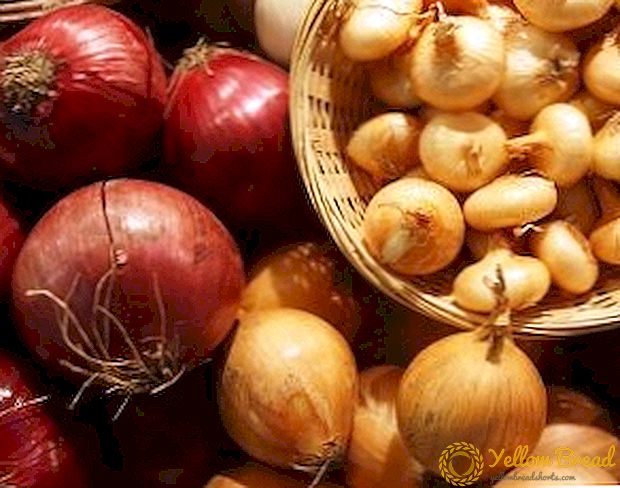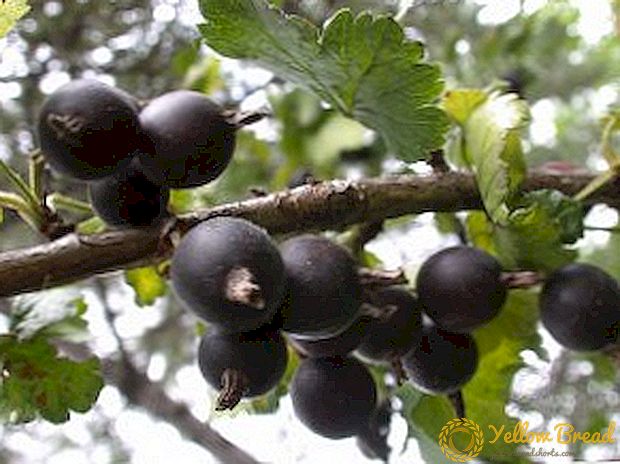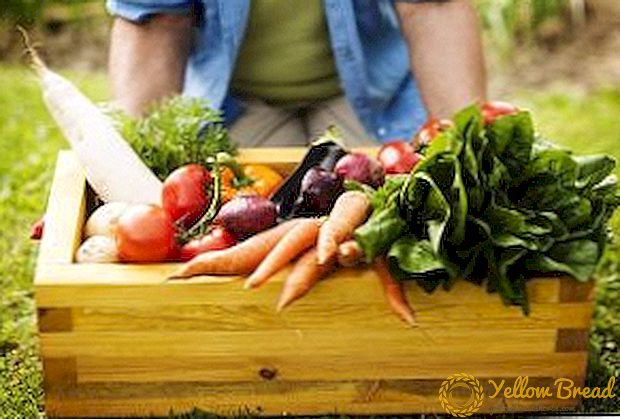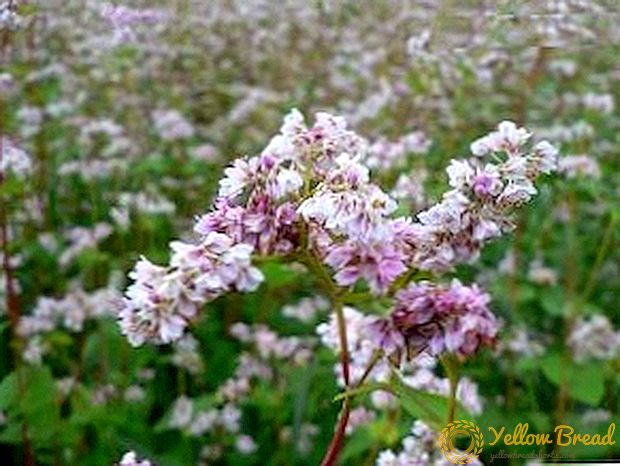 Buying buckwheat in the store and eating buckwheat porridge, we do not even think about the question of how this plant grows and what stages buckwheat goes through before getting to the store shelves. Consider in detail what buckwheat is, how it is grown and what is the significance of each stage in the cultivation of buckwheat.
Buying buckwheat in the store and eating buckwheat porridge, we do not even think about the question of how this plant grows and what stages buckwheat goes through before getting to the store shelves. Consider in detail what buckwheat is, how it is grown and what is the significance of each stage in the cultivation of buckwheat.
- Biological features of buckwheat
- Soil: processing and fertilizer
- Good and bad predecessors of buckwheat
- Seed preparation
- Planting dates
- Sowing buckwheat: scheme, seeding rate and seeding depth
- Care for buckwheat crops
- Harvest
- Processing and storage of buckwheat
Biological features of buckwheat
Buckwheat plant belongs to the genus Fagopyrum Mill. The buckwheat genus includes more than 15 species belonging to the Buckwheat family. One of the species has the name buckwheat. This herb is a cereal crop. Homeland buckwheat - North India and Nepal. There it is called black rice. Introduced into the culture of more than 5 thousand years ago. According to one version, buckwheat came to Europe during the Tatar-Mongol invasion. Among the Slavic peoples, it acquired the name of buckwheat as a result of supplies from Byzantium in the 7th century.
Buckwheat is an annual plant and has a simple description.
Root system consists of stem root with long lateral processes. It is poorly developed compared with other field plants. The function of the upper part of the roots of a plant is the assimilation of nutrients from the soil, the lower part is the water supply of the plant. The root system develops throughout the entire growth period.
 Buckwheat stalk branched, hollow, curved in knots, 0.5–1 m high, 2–8 mm thick, green in the shadow side and reddish brown in the sunny side. Peduncles tender, thin, easily damaged by frosts and the first to suffer from drought.
Buckwheat stalk branched, hollow, curved in knots, 0.5–1 m high, 2–8 mm thick, green in the shadow side and reddish brown in the sunny side. Peduncles tender, thin, easily damaged by frosts and the first to suffer from drought.
Flowers collected in inflorescences white or pale pink. Appear in July, have a peculiar smell and attract bees.
Leaves different: cotyledon, sessile, petiolate. The fruit is generally triangular in shape. Depending on the nature of the ribs and the edges of the fruit, winged, wingless and intermediate forms are distinguished. The color of the fruit is black, brown, silver. The size of the fruit depends on the variety of buckwheat and growing conditions. The fruit is covered with a dense shell, which is easily separated.
Soil: processing and fertilizer
The productivity of growing buckwheat depends on the climate and soil. The highest yields are observed in the forest-steppe and Polesye. The plant can grow on different soils, but to achieve efficiency, you need to know that buckwheat prefers soils that warm quickly and are sufficiently saturated with oxygen and nutrients with a weakly acidic or neutral reaction (pH 5.5-7). On heavy, clogged soils prone to swimming, the productivity of cultivation will be minimal.
The tillage system for buckwheat may be different. The depth of cultivation of the soil and the timing of its treatment depend on weather conditions and the culture of the predecessor. Since buckwheat is a late sowing culture, the main task during tillage is maximum moisture retention, provoking weed seeds to germinate in the seed period, creating a favorable soil structure and its alignment.
 Proper fertilization in the soil is beneficial for increasing crop productivity. buckwheat To form 1 centner of grain, the plant consumes 3-5 kg of nitrogen from soil, 2-4 kg of phosphorus, 5-6 kg of potassium. Therefore, the plant fertilization system should be based on a balanced method based on soil research.This should take into account the need for nutrients for a particular plant and the consumption of these elements by the future harvest. It is necessary to know that phosphate and potash fertilizers are applied for cereals during autumn plowing or when sowing seeds, nitrogen fertilizers - in the spring during cultivation or as top dressing.
Proper fertilization in the soil is beneficial for increasing crop productivity. buckwheat To form 1 centner of grain, the plant consumes 3-5 kg of nitrogen from soil, 2-4 kg of phosphorus, 5-6 kg of potassium. Therefore, the plant fertilization system should be based on a balanced method based on soil research.This should take into account the need for nutrients for a particular plant and the consumption of these elements by the future harvest. It is necessary to know that phosphate and potash fertilizers are applied for cereals during autumn plowing or when sowing seeds, nitrogen fertilizers - in the spring during cultivation or as top dressing.
The most favorable period for applying nitrogen fertilizer for buckwheat is the period of budding. Mineral nitrogen improves the quality indicators of the grain: it increases its mass, improves the chemical composition and reduces filminess. The rate of ammonium nitrate per one top dressing is 60-80 kg / ha. It should be noted that for chernozem and chestnut soils this technique in the cultivation of buckwheat has no practical application in the technology of cultivation. In the northern areas, all types of mineral fertilizers can be applied during spring cultivation, and complex granular fertilizers - during sowing.
Good and bad predecessors of buckwheat
 To achieve high yield buckwheat must take into account its place in the rotation. Years of experience and research scientists confirm that The best precursors of buckwheat are winter crops, legumes and tilled crops. It is not recommended to plant it after grain crops, because there is a high contamination of the soil with weeds, which negatively affects the yield. After clover, the yield of buckwheat increases by 41%, after peas - by 29%, potatoes - by 25%, winter rye - by 15%. After barley, the yield will decrease by 16%, oats - by 21%.
To achieve high yield buckwheat must take into account its place in the rotation. Years of experience and research scientists confirm that The best precursors of buckwheat are winter crops, legumes and tilled crops. It is not recommended to plant it after grain crops, because there is a high contamination of the soil with weeds, which negatively affects the yield. After clover, the yield of buckwheat increases by 41%, after peas - by 29%, potatoes - by 25%, winter rye - by 15%. After barley, the yield will decrease by 16%, oats - by 21%.
It is good to sow buckwheat after tilled: sugar beet, silage corn, potato, vegetable. After winter, buckwheat also grows well. It uses organic and mineral fertilizers applied under the previous crop. To increase the yield of buckwheat, chopping straw and embedding it in the soil of previous cereal crops is used as an alternative fertilizer.As good predecessors for buckwheat, leguminous crops of late varieties are used: vetch, a layer of perennial grasses, soybeans.
 Some scientists believe that the presence of pure steam in the link of crop rotation significantly increases the yield of buckwheat in comparison with the non-vapor-free links. A repeated crop of buckwheat leads to a decrease in yield by 41-55%. When conducting research, the maximum yield in the link of couples — peas — buckwheat and the minimum with a three-year repeated sowing of buckwheat was established.
Some scientists believe that the presence of pure steam in the link of crop rotation significantly increases the yield of buckwheat in comparison with the non-vapor-free links. A repeated crop of buckwheat leads to a decrease in yield by 41-55%. When conducting research, the maximum yield in the link of couples — peas — buckwheat and the minimum with a three-year repeated sowing of buckwheat was established.Buckwheat is a phytosanitary crop. If after it to sow cereal grains, the defeat of their root rot will decrease by 2-4 times in comparison with the harvest after the grain predecessors. Due to the structure of its roots, buckwheat reduces the density of the soil. This has a positive effect on the growth of crops sown after it.
Seed preparation
The right choice of plant variety and the preparation of seeds for sowing significantly increase the yield of the crop.
Treatment of buckwheat seeds for sowing provides their disinfection from diseases, increases germination and takes place 1-2 weeks before sowing. As film former use aqueous solutions of glue. They add the drugs "Fenor", "Vitatiuram", "Roxim", "Fundazol" according to the instructions and pickle the seeds with the method of moistening or water suspension. Pests and diseases of buckwheat, such as gray rot, mildew, etc., seed treatment leaves no chance. This significantly affects the increase in yield.
Planting dates
 It is necessary to sow buckwheat as soon as the soil warms to a depth of 10 cm to 10-12 ° C and the threat of spring frosts passes. Early sowing time contributes to the friendly germination of seeds, the use of soil moisture reserves of young shoots and early ripening of the crop. This, in turn, will improve the conditions for its cleaning. On average, it is necessary to sow cereal crops in the steppe in the second - third decade of April, in the forest-steppe zone - in the first half of May, in Polesie - in the second - third decade of May.
It is necessary to sow buckwheat as soon as the soil warms to a depth of 10 cm to 10-12 ° C and the threat of spring frosts passes. Early sowing time contributes to the friendly germination of seeds, the use of soil moisture reserves of young shoots and early ripening of the crop. This, in turn, will improve the conditions for its cleaning. On average, it is necessary to sow cereal crops in the steppe in the second - third decade of April, in the forest-steppe zone - in the first half of May, in Polesie - in the second - third decade of May.
Sowing buckwheat: scheme, seeding rate and seeding depth
The faster the sprouts develop, the more it contributes to the oppression of weeds and significantly increases the yield. Preparing the soil for sowing buckwheat consists of basic and preplant treatment. It is carried out taking into account previous crops, soil composition, degree of soil moisture, weed infestation of soil. Excellent results in the development of buckwheat in the initial period of growth showed tillage of the soil, as well as the cultivation of rolling with a smooth roller.
 Before sowing buckwheat, it is necessary to choose a sowing scheme for the seeds: ordinary, narrow-row and wide-row. The wide-row method is used when sowing middle and late ripening varieties on highly fertile fertilized soils. In this case, the important role played by the timely care of plants. The common method is used on soils with low fertility, on light and non-saline soils,when sowing early varieties. Since the plant is adapted to branching, it must be sown sparsely and evenly.
Before sowing buckwheat, it is necessary to choose a sowing scheme for the seeds: ordinary, narrow-row and wide-row. The wide-row method is used when sowing middle and late ripening varieties on highly fertile fertilized soils. In this case, the important role played by the timely care of plants. The common method is used on soils with low fertility, on light and non-saline soils,when sowing early varieties. Since the plant is adapted to branching, it must be sown sparsely and evenly.
The seeding rate of buckwheat seeds depends on many factors: farming culture in the region, climatic features. With the wide-row method, the optimal consumption of buckwheat seeds is 2-2.5 million pcs. / ha, with a private - 3.5-4 million units. / ha When thickened crops grow plants thin, have a low coefficient of ozernennost, crops tend to lodging. Sparse crops also adversely affect the yield of buckwheat. Therefore, the seeding rate must be calculated based on the factors: sowing scheme, soil moisture, soil type, characteristics of seeds.
When ordinary seeding rate should be 30-50% higher than with wide-row. In the dry period, the rate must be reduced, and in the wet period - increased. On fertile soils, the rate must be reduced, and on infertile soils - increased. When sowing seeds with reduced germination, the rate is increased by 25-30%.
 Depth seeding is important. Plant sprouts have weak roots, so it is difficult for them to break through the soil and endure cotyledons with fruit membranes.Therefore, in order for the buckwheat seedlings to be amicable and evenly ripened, it is necessary to sow the seeds in the moist soil to the same depth. In heavy soils to a depth of 4-5 cm, in cultivated soils - 5-6 cm, with a dry top layer - 8-10 cm. According to scientists, Deep embedding of buckwheat seeds improves plant development and has a positive effect on the number of inflorescences and grains.
Depth seeding is important. Plant sprouts have weak roots, so it is difficult for them to break through the soil and endure cotyledons with fruit membranes.Therefore, in order for the buckwheat seedlings to be amicable and evenly ripened, it is necessary to sow the seeds in the moist soil to the same depth. In heavy soils to a depth of 4-5 cm, in cultivated soils - 5-6 cm, with a dry top layer - 8-10 cm. According to scientists, Deep embedding of buckwheat seeds improves plant development and has a positive effect on the number of inflorescences and grains.
Care for buckwheat crops
For the development of good seedlings is important to preserve moisture in the soil. A particularly large effect in this is the rolling of crops. Weed control is best done mechanically. Before the emergence of seedlings, it is necessary to harrow the crops. To improve the growth and development of plants, it is necessary to ensure timely loosening of row spacing. Improving the water and air regime of the soil, they carry out the second treatment between the rows in the budding phase. It is combined with plant nutrition.
Plant care includes weed and buckwheat diseases. Biological methods of control include the breeding of insects, fungi, bacteria that can not affect the shoots and affect the obstacles. It is also necessary to increase the competitiveness of buckwheat by creating favorable conditions for its growth. Chemical control methods should be used only when the crop cannot be saved by other means. Herbicides are used as chemicals. It should be understood that there is an economic hazard threshold. The level of weeds must be such that the use of herbicides would be cost-effective.
 Of great importance in the system of care for crops of buckwheat is the delivery of bee colonies to the field when buckwheat is in bloom. Honey buckwheat is 80-95% pollinated by bees, therefore it is necessary a day or two before flowering near the fields to place the hives at the rate of 2-3 bee colonies per 1 ha.
Of great importance in the system of care for crops of buckwheat is the delivery of bee colonies to the field when buckwheat is in bloom. Honey buckwheat is 80-95% pollinated by bees, therefore it is necessary a day or two before flowering near the fields to place the hives at the rate of 2-3 bee colonies per 1 ha.
Harvest
When browning the plants for 75-80% begin cleaning buckwheat. It is carried out for 4-5 days. The height of the cut of plants should be 15-20 cm. The main method of harvesting buckwheat is separate. At the same time, the slanted mass dries out in 3-5 days, it is easily threshed.The advantages of this method are a significant reduction in yield losses, ripening of green fruits, improving the quality of grain, and the absence of additional drying of grain and straw. This method improves the technological and sowing qualities of grain and improves its safety.
If the crop is sparse, low-stem, crumbling, an effective harvesting method is direct combining. In this case, the grain has a high humidity, poorly separated from the weeds.
Processing and storage of buckwheat
 When combined harvesting the harvest is cleaned with the help of grain cleaning machines and dried immediately after harvest. Delay in cleaning will cause the grain to self-heat. Grain cleaning is carried out in three stages: preliminary, primary, secondary. It is carried out on machines of various types.
When combined harvesting the harvest is cleaned with the help of grain cleaning machines and dried immediately after harvest. Delay in cleaning will cause the grain to self-heat. Grain cleaning is carried out in three stages: preliminary, primary, secondary. It is carried out on machines of various types.
High grain retention is provided by drying to a moisture content of 15%. Grain for sowing is stored in a dry place in fabric bags. Each batch is folded separately onto a wooden pallet. The height of the stack should not exceed 8 bags in height and 2.5 m in width. When stored in bulk, its height should be up to 2.5 m.
Buckwheat seeds, intended for human consumption, are transported for processing to special groats plants. They carry out the cleaning of grain, its hydrothermal processing, separation into fractions, peeling, separation of final products. Without the use of hydrothermal processing of grain get white grits. Having examined in detail how to sow and grow buckwheat, we can affirmatively say that it belongs to those cultures that do not allow violations of technological discipline. All stages of the cultivation of buckwheat are equivalent. Therefore, to obtain high yields Obligatory observance of the whole agrotechnical complex is necessary.

